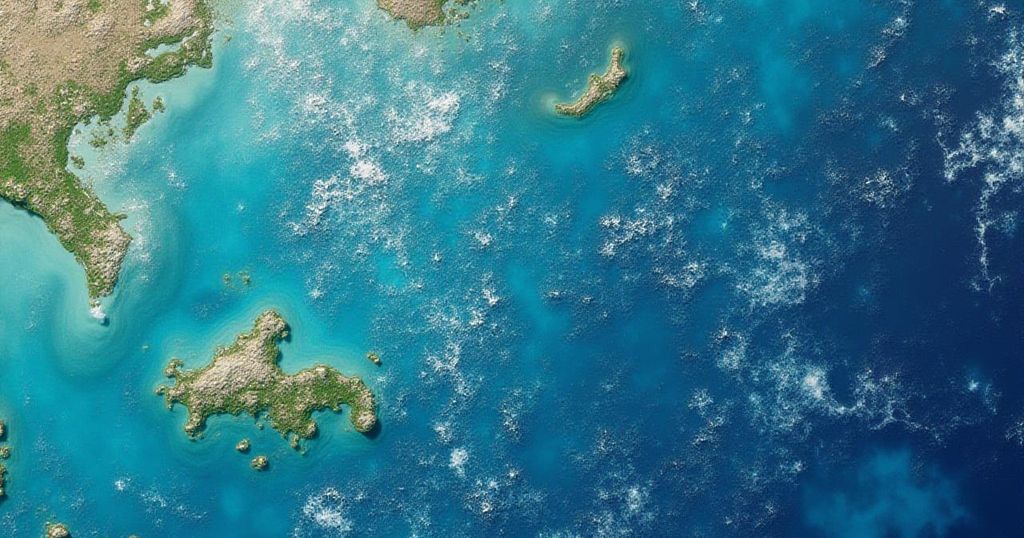In 2024, record-breaking temperatures and unusual weather patterns emerged globally, exacerbated by human-induced climate change. As glaciers melt at alarming rates, sea levels rise, threatening coastal communities with increased storm vulnerability. NASA’s satellite monitoring reveals significant changes, indicating an urgent need for climate resilience strategies in affected areas.
In the year 2024, alarming climatic records were established, namely the highest average temperature for July in over 175 years, culminating on July 22, the hottest day ever cataloged. This Northern Hemisphere summer etched itself into history as the hottest since approximately 1880. Simultaneously, the hurricane season commenced notably with Hurricane Beryl, marking the earliest occurrence of a Category 4 hurricane on record. Conversely, in South Africa, the midst of winter brought about unprecedented rainfall and unusual storms, even featuring snowfall in certain areas. Furthermore, a June report highlighted the critical state of human-induced global warming, reaching unprecedented levels. As reported by Space.com, climate change, driven by human activities, accelerates planetary heating, prompting glaciers to melt at extraordinary rates, which in turn contributes to rising sea levels. This phenomenon endangers coastal communities by increasing their vulnerability to severe storms and displacing diverse animal species from their habitats. Last month, Hurricane Helene wreaked havoc across the southeastern coast of the United States, while Hurricane Milton inflicted further devastation in South Florida. The intensity of these storms is intricately linked to climate change dynamics. In South Africa, both the eastern and western coasts have been subjected to increasingly extreme weather patterns, with a troubling cycle of flooding followed by drought intensifying. NASA and various space agencies are employing climate satellites to monitor the significant impact of climate change on weather patterns. Utilizing satellite gravimetry, which precisely measures ice mass loss, rising oceans, and fluctuations in groundwater supply, scientists are unveiling the dangers associated with these environmental shifts. These developments pose an escalating threat to coastal towns worldwide, indicating a growing crisis. “Satellites can see what we cannot with our own eyes: changes in deep underground water storage that would require us to dig deep in the ground to witness firsthand,” stated Cedric David, a scientist from NASA’s Jet Propulsion Laboratory (JPL) in Southern California. “That’s just mind-blowing.” Experts have long warned about the severe implications of rising sea levels for coastal cities. The Intergovernmental Panel on Climate Change anticipates that by the year 2100, sea levels may rise by between 0.43 meters and 0.85 meters, an increment that, though seemingly modest, could result in catastrophic effects for coastal regions. It is hoped that the data harvested from climate satellites can serve as a compelling tool to influence climate-related policy decisions and persuade officials to mitigate pollution, thereby alleviating the acceleration of global heating. Cedric David remarked, “We’ve had a series of radar altimetry satellites circling around our Earth in constant operation since 1992 that have allowed us to see the undeniable: Oceans are in constant rise. The 30-year-long curves of sea level rise are unquestionable evidence that our climate is changing.” Experts advise residents of coastal communities to prepare for the repercussions of severe weather events by implementing measures aimed at enhancing climate resilience in their local environments.
The article discusses the repercussions of human-driven climate change, particularly focusing on global temperature increases and associated extreme weather events such as hurricanes and precipitation anomalies. It highlights the use of satellite technology to monitor these changes and the potential dangers facing coastal towns as sea levels rise and weather patterns become increasingly erratic. Through the perspective of various scientists and data sourced from credible reports, the article emphasizes the urgent need for climate action and adaptation strategies to safeguard vulnerable communities.
In summary, the year 2024 has witnessed unprecedented climatic shifts marked by record temperatures and severe weather phenomena, signaling a critical juncture in understanding the effects of human-induced climate change. The evidence gathered by NASA and other agencies underscores the urgent necessity for proactive measures to protect coastal communities from the escalating risks posed by rising sea levels and intensified storm activity. Collaboration and the application of satellite data will be crucial in shaping future climate policies and fostering resilience among vulnerable populations.
Original Source: www.2oceansvibe.com







